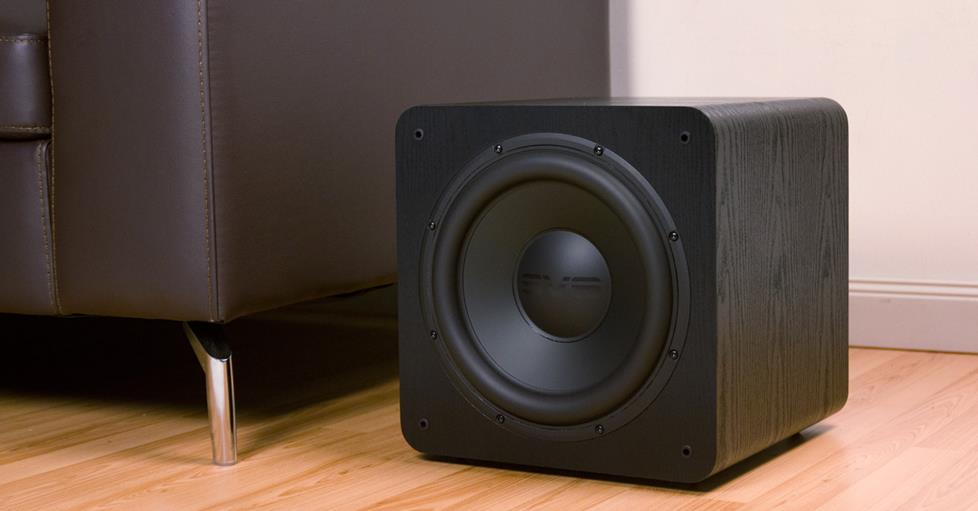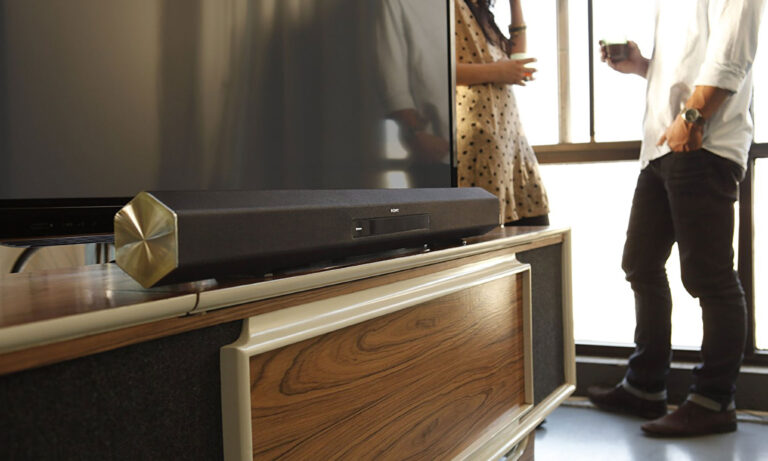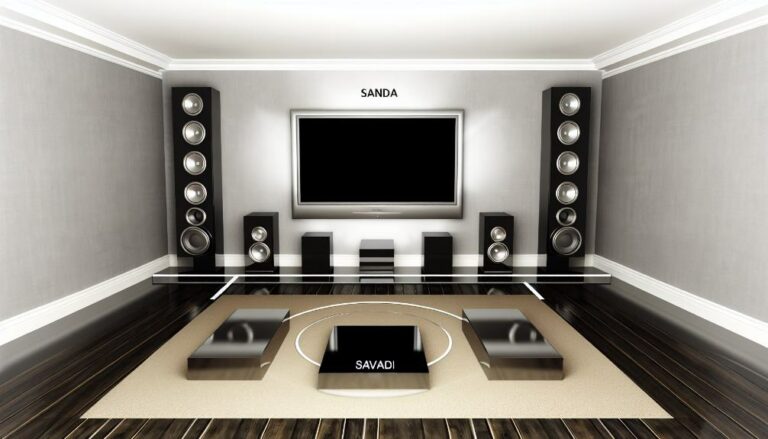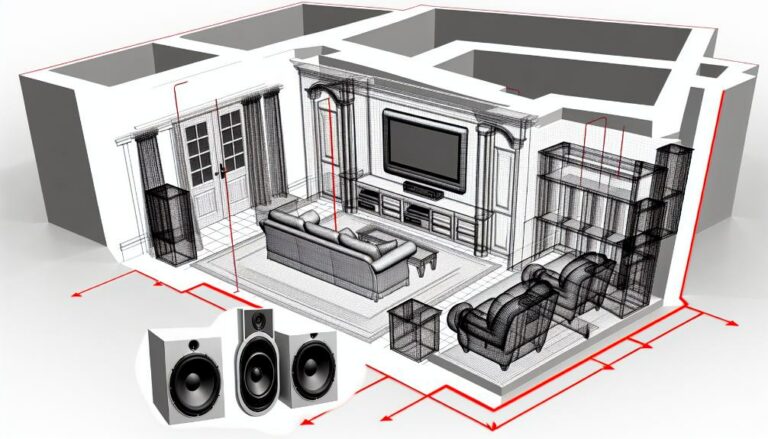In any home theater system, the role of subwoofers is paramount, as they produce low-frequency sounds that provide a rich, immersive experience.
Determining the exact number of subwoofers that will adequately fulfill this function is a task that hinges on several factors. This includes, but is not limited to, the size and acoustic properties of the room, the type of audio content being played, and the listener’s personal preference.
As we explore these elements further, we will also consider the differences between utilizing a single subwoofer versus multiple units and how the positioning of these components can influence the overall sound quality.
This comprehensive discussion aims to guide you in making an informed decision on the optimal subwoofer count for your home theater system.
Key Takeaways
- Subwoofers produce low-frequency sounds for a rich audio experience.
- Proper subwoofer placement is crucial for achieving a balanced bass response.
- Single subwoofers are easier to set up and suitable for smaller rooms, while multiple subwoofers provide more evenly distributed sound in larger rooms.
- The number of subwoofers needed depends on the size of the room and desired sound immersion.
Understanding Home Theater Subwoofers
In order to fully appreciate the impact of a home theater system, it is crucial to understand the role and functionality of its subwoofers, which are responsible for producing low-frequency sounds and, thus, enhancing the overall auditory experience.
Subwoofers are specifically designed to reproduce the lower range of frequencies, typically from about 20 to 200 Hertz for consumer products, and are an essential component for any high-quality audio system. This range, known as the subwoofer frequency, is what provides depth and richness to the overall sound, contributing significantly to the immersive audio-visual experience that a home theater system aims to deliver.
There are various subwoofer types, each with distinct characteristics and advantages. Passive subwoofers, for instance, rely on external amplifiers for power and offer more placement flexibility. Active or powered subwoofers, on the other hand, have built-in amplifiers and deliver more robust and impactful bass. Understanding the distinctions between these types and choosing the right one for your system is a crucial step toward creating a home theater that truly envelops you in the cinematic experience.
In essence, the subwoofer is the heart of a home theater’s sonic landscape, pounding out the low-frequency notes that give the sound its depth and fullness.
Importance of Room Size and Acoustics
While the type and quality of a subwoofer significantly contribute to the overall sound experience, the size of the room and its acoustic properties play an equally critical role in audio performance.
Subwoofer placement is a vital aspect to consider when configuring your home theater system. Positioning the subwoofer in a room’s corner can accentuate the bass response, providing a more immersive cinematic experience. Conversely, a poorly placed subwoofer can result in ‘dead spots’ where the bass is less perceivable or ‘hot spots’ with overpowering bass. It is, therefore, crucial to experiment with different placements to achieve a well-balanced sound.
The room’s acoustics also significantly impact the audio performance. Hard surfaces reflect sound waves, causing distortions, while soft materials absorb them, leading to a dampened sound. Acoustic treatments, such as diffusers and absorbers, can be used to balance these reflections and absorptions, enhancing the overall sound quality.
Understanding the influence of room size and acoustics allows for a more informed decision when choosing and arranging subwoofers, ultimately leading to a more satisfying home theatre experience.
Single Vs. Multiple Subwoofers
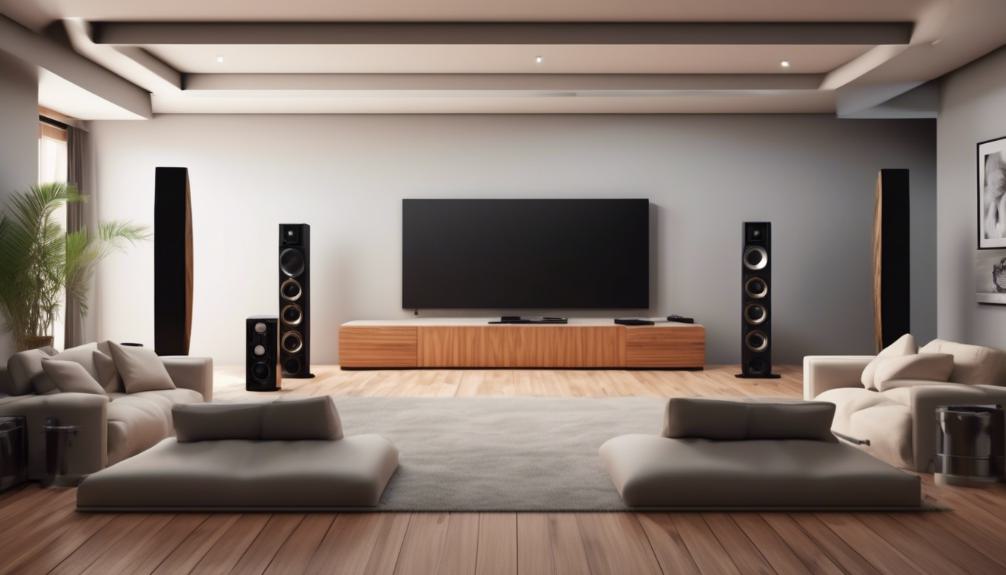
Diving deeper into the realm of subwoofers, a critical consideration arises in the choice between a single subwoofer setup and a multiple subwoofer configuration.
Each approach has its unique merits and demerits, linked closely with subwoofer types and subwoofer connectivity.
Single subwoofers, typically easier to set up, are often sufficient for smaller rooms and simpler systems. They offer a straightforward subwoofer connectivity process, and their performance is usually adequate for a casual home theater enthusiast. However, their limited capacity may prevent them from delivering the full depth and richness of sound in larger spaces or high-end setups.
On the other hand, multiple subwoofers offer several advantages. They can provide a more evenly distributed, immersive sound experience, especially in larger rooms. This is due to the broader coverage and the ability to balance out room-induced acoustic anomalies. However, multiple subwoofers require careful selection of subwoofer types, precise placement, and more complex connectivity.
Positioning Your Home Theater Subwoofers
Proper placement of your home theater subwoofers is a crucial factor that significantly influences the overall sound quality and acoustics of your system. To achieve optimal audio performance, it is essential to follow some key subwoofer placement strategies and integrate these techniques into your setup.
- Corner Placement: This strategy helps in maximizing the output, making the sound more powerful. However, it might result in an uneven distribution of sound.
- Front of the Room: Placing the subwoofer near the front speakers can result in a more cohesive integration of sound, enhancing the overall audio experience.
- Along the Wall: This technique helps reduce the chances of creating localized bass hotspots, giving a more balanced sound across the room.
- Subwoofer Crawl: This technique involves moving the subwoofer to different positions to find the best sound quality.
Choosing the Right Subwoofer Count
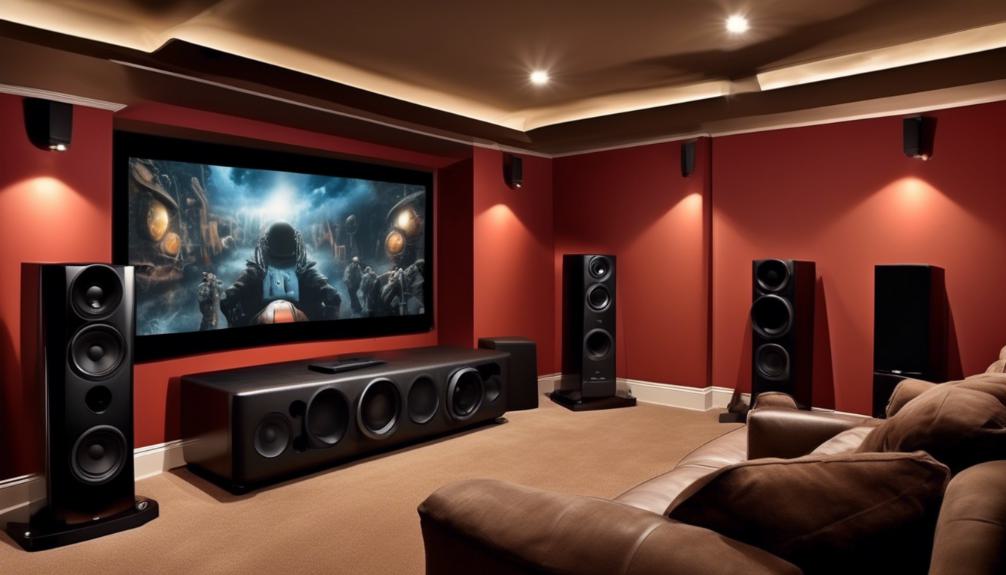
After ensuring the optimal placement of your subwoofers, the next critical consideration in enhancing your home theater audio experience is to determine the appropriate number of subwoofers for your system. The subwoofer count greatly influences the audio quality, so it’s crucial to make a well-informed decision.
Begin by understanding your space and the level of sound immersion you desire. Larger areas may require multiple subwoofers to produce adequate bass coverage. Conversely, smaller spaces might only need a single, quality subwoofer for impressive audio.
An important aspect of your decision-making process is budget considerations. High-end subwoofers can deliver exceptional performance but come at a premium. Moderate or budget-friendly options may suffice for casual listeners. It is, therefore, essential to balance your budget with your expectations.
A subwoofer brand comparison is another valuable tool in your decision-making arsenal. Different brands offer varying degrees of sound quality, durability, and price points. Investigate customer reviews and professional ratings to identify a brand that aligns with your needs and budget.

